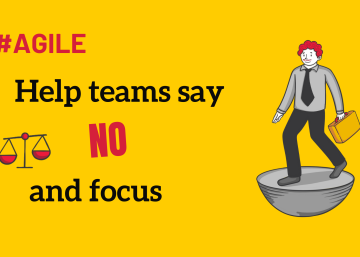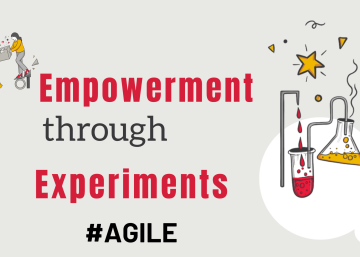Celebrating a hundred is a big thing. At least the team at Flyntrok thinks so. Approximately some 700 sketchnotes later and over a 100 sketchnote contributors, we put the call out to contributors from our previous editions, to tell us which are their favourite sketchnotes and why? We are featuring some of our contributors in this edition. Their thoughts are touching and powerful. We hope it invites you to learn new concepts or revisit much beloved ones. We also have tips from sketchnoters on how to get started with sketchnoting at the end of the post. We hope you find it useful.
Rachel Swanson
About Rachel
Rachel has a master’s degree in education, specializing in curriculum and instruction and is an experienced coach who uses creativity to help people and organizations tell their stories.
Her favourite sketchnote and why?
The Gift and Power of Emotional Courage
“Here’s one of my favorite sketches. I love this one because it represents a topic I value. It also demonstrates one of my favorite ways to practice sketchnoting, which is to sketch TED talks. They’re short, always full of fascinating content, and easy ways to try out different styles of sketchnoting.”
Nitasha is an Illustrator and Graphic Facilitator based in India.
10 Habits of a Successful Artist
I had read an article and instantly i had an inclination to create this. As an artist I relate with this.
Olga is an Agile Coach and Project Manager based in Germany.
3M model from Toyota Productions System Applied to Baby SLeep
It’s definitely hard to choose one sketchnote as being my best one they are all different and I like or dislike different aspects of them. For the one that I chose — here it is:
I am not totally happy with how it looks, but I like it a lot content-wise. I created it while being on parental leave and I felt that this concept of waste by Toyota so well applies to different strategies of how to try to make a baby sleep. Although baby sleep is of course only an example to make people understand the content of Toyota’s 3M Model, I very much like the connection between family life and work life in this sketchnote.
Sarah is a Digital Learning Coach based in Romania
From Surviving to Thriving
I think I would have to say that this is the one that has recently impacted me most. It was an incredible workshop that I attended and probably only sketchnoted half of what I heard!! It definitely helped my thinking and reinforced the importance of self-care.
Francessco is an Agile Coach and Collaboration Alchemist based in Ireland. He brings together the worlds of visualization, agility and coaching to offer the people and teams he works with a unique multi-sensorial experience where they can reach much deeper insights than they would normally do through standard work practices.
OWL LAbs
I’m particularly proud of this one as it represents an important part of my career, one where among other things I picked up my visualization skills. I drew my first sketchnote on 29th June 2020. Since that day I have created about 150 more drawings. That’s an average of 1 per week over 3 years. During this period I have practised with many styles, moving from analog to digital, from something fully hand-drawn to a photo collage where the various pictures are glued together by some visual elements created manually. For each I have tried a number of variations, playing with color, depth, drawing tools. Of all the formats I have tried, my favorite remains drawing a large flipchart to use in landscape mode as a background when I’m in calls. What I love about them is that something so simple can completely change the mood of a call. It almost feels like we are in a different space. It often also triggers curiosity in the participants, which is always a great thing for someone like me whose job is to improve both the quality and the quantity of collaboration. I’ve done quite a few of these landscapes and in all I have celebrated someone or something else: the company I was working for and a specific initiative, the conference or podcast that was hosting me for a particular talk, the concept that I was trying to explain.
The one thing that I had not yet thought about capturing was… ME. It’s true. Despite having been tempted to I’ve never even drawn a manual of me. I allow myself to make some appearances in photo collages but I’ve rarely used visualization skills to introspect in my life. But 1 year ago, when I left my corporate job, I decided to capture the whole experience in 1 diagram. I had spent 5.5 years in that company and I owe it to them and all my colleagues if over time I have grown to be the professional that I am today, crazy enough to start their own business in the middle of a pandemic with a recession already recognized to be down the corner.
It’s during my time in this company that I had discovered my love for visualization and how powerful it can be when brought to work. It seemed the perfect thing to get ready to say goodbye to the wonderful community that I had the honor to create & grow by showing in a last call with a backdrop designed specifically for them. To tell them my story. The funny (but in retrospective not surprising thing) is how much I learnt from this experience. Technically I love that I managed to create my own layout, playing with the company logo to create an unconventional journey line. The whole composition has basically 1 single color, blu, that comes in 4 shades. I loved that I managed to use that same color for both filling large empty spaces and to highlight words. I decided to use a 2nd color only for a part in the corner, as an homage to where everything started: Ireland. Of course the color could have only been green 🙂 I find it funny that I called the starting point Innovation Center Dublin, whose acronym is ICD, the same as I Can’t Draw Syndrom, something that today I fight to eradicate from work contexts. While drawing this I discovered that I changed 6 roles (with a few twists in between each of them). Without context it may seem like a lot but if I look at the trajectory it feels like instead everything was part of one smooth evolution. Like my personal and professional growth could have not led me anywhere else.
Tanmay is a visual thinker, facilitator and illustrator. His sketchnotes have been featured in best-selling books, global conferences and publications like HBR Ascend, Forbes, HuffPost and World Economic Forum.
What Rebels Want From Their Boss
People’s efforts to impact change in organizations are undermined by outdated leadership practices that view challenging the status quo as a threat. Therefore the natural response is to term these rebels as “trouble makers”. This sketchnote resonated with a lot of people across the globe and many of these people reported that they “felt seen” when they saw this sketchnote. The sketchnote also sparked many a conversations around expectations between people, teams and bosses. Many people used the sketchnote as a poster on their desk to align expectations with their co-workers. This sketchnote may have done its part on clarifying that not all rebels are trouble makers and that leaders need to build an environment where rebels find a safe space to ideate, innovate and challenge the status quo.
Abhijit Bhaduri is the General Manager of the Global Learning & Development function at Microsoft.
Here are three reasons why weak ties, such as friends of friends, are underleveraged as a career growth strategy: Weak ties provide access to new information and opportunities: People with whom you have weaker ties are more likely to have information or connections that are useful and relevant for your career growth 1. They know people you don’t know and have insights and information that will be fresh to you 2. Weak ties see you for who you are now: New acquaintances see you for who you are now; they aren’t weighed down with the baggage of picturing you as the entry-level employee you were 10 years ago. Weak ties can lead to more job opportunities: A large-scale experiment co-directed by an MIT scholar shows that on LinkedIn, weak ties are more likely to land you new employment, compared to your ties with people you know better. These are just some of the reasons why weak ties can be a powerful tool for career growth.
Sherrill is a Graphic Recorder, Illustrator, Educator, Visual Facilitator and has a background is in Studio Art/Art Education and I has a Master of Arts in Teaching and is based in the US.
Complicating the Narrative.
I was invited to collaborate with Krista Tippett and The On Being Project in Minneapolis, MN to graphic record a convening of journalists and thought leaders from around the United States. The question the group was sitting with was “What is Journalism For?” The inspiration for the convening was an article written by journalist Amanda Ripley, of Good Conflict, entitled “Complicating the Narratives”. As part of my research to prepare for the event, I read and sketchnoted the article and shared it with the author. She was delighted by the visual and plans to share it out as well. The timing of the conversation about how journalism can be more generative in bridging the gap of divisiveness that is growing in our country was much needed and the article lays out pragmatic, actionable steps journalist and all citizens can take to effect change in our own circle of influence. THAT gives me hope.
Hayley is a prolific sketchnoter and has appeared numerous times in our Sketchnote editions. Hayley is a Chartered Coaching Psychologist, Registered Occupational Psychologist, University lecturer, and Sketchnote doodler.
How to Maintain Your resilience Through Times of Stress
It means a lot to me for a number of reasons: 1) It was one of my earliest creations – it’s five years old. 2) No matter how many times I share it, it always gets a great reaction and tends to go viral – resonating with and helping people.
Getting started with Sketchnoting!
Our contributors come from all walks of life and professional groups. Including educators, coaches, psychologists, Illustrators, project managers and learning facilitators. We asked them a few tips on how to get started with creating our own sketchnotes. Here is what they have to say;
- Use your personal context to help create a connect with the subject matter. It will make your sketchnote more relatable.
- Creating a sketchnote helps generate deeper thinking on the subject matter.
- Ted-talks are a great source of content to practice your sketchnote style
- In fact you can sketchnote about anything – a book or article you have just read, a lecture you attended, a work meeting, your own professional or your team/organisations journey. Sketchnoting is only limited by your imagination.
- Practice and publish. Because both will help your style develop.
- Sketchnotes can be conversation starters. Print Them out. Put them up where people will see them. Give feedback to the sketchnoter. They will love it.
- You never know who will resonate with your sketchnote. It may just validate their own thinking and make them feel heard.
We hope you found these tips useful to get started. Please look for our next curation on our social media handles @flyntrok on all platforms.


